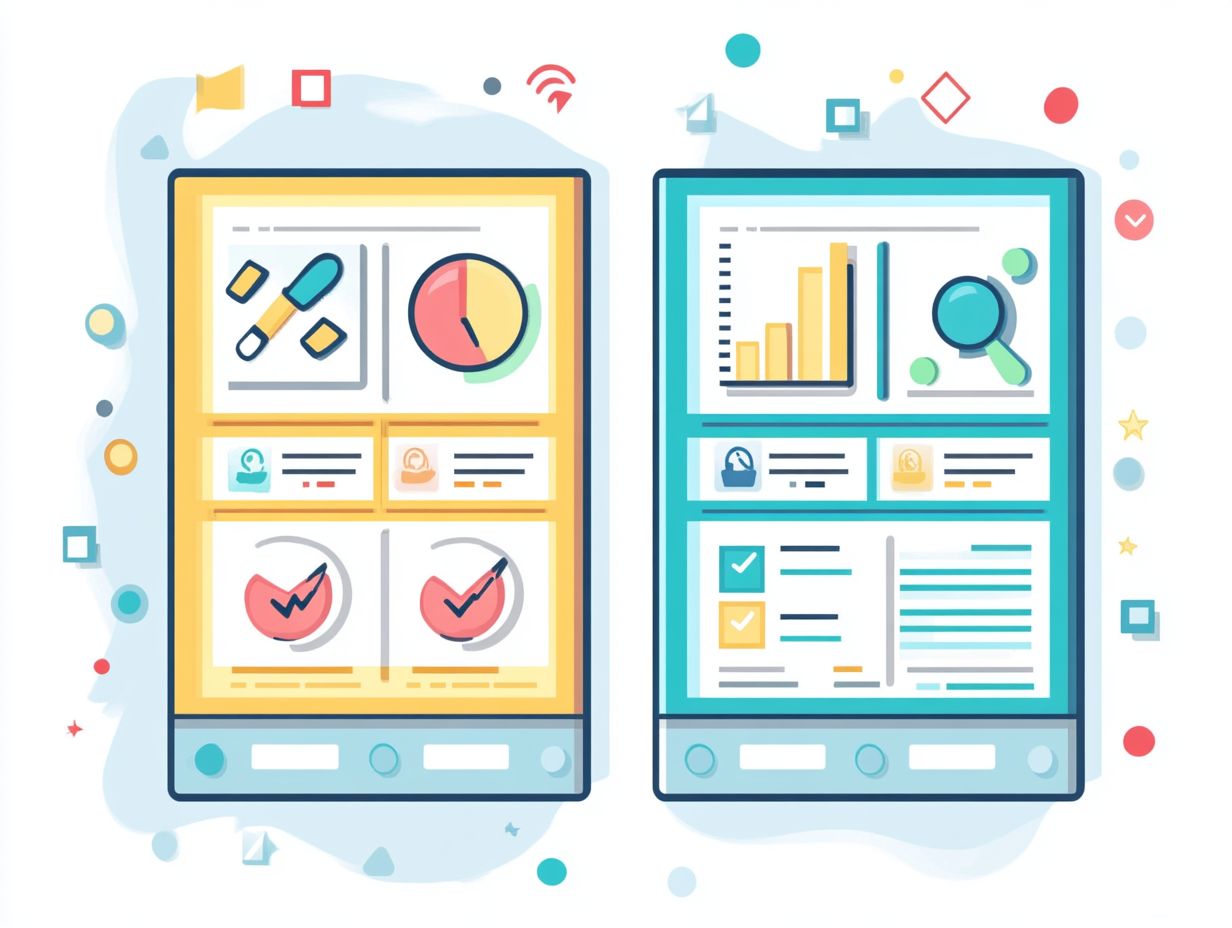The Ultimate CRM Comparison: Features vs. Pricing
Choosing the right CRM is vital for any business looking to improve operations and customer interactions.
With numerous options available, understanding key features like customization, integration, and analytics can help you stand out.
This article compares various CRM solutions, exploring different pricing models and scalability options.
By assessing your business needs, you’ll be prepared to make a decision that aligns with your goals.
Contents
- Key Takeaways:
- Key Features to Consider
- Pricing Models and Plans
- Choosing the Right CRM for Your Business
- Frequently Asked Questions
- What is the importance of comparing CRM features and pricing?
- What are the key features to consider when comparing CRM systems?
- How can I determine the pricing of a CRM system?
- Is it better to choose a CRM with more features or a lower price?
- Are there any hidden costs to consider when comparing CRM pricing?
- What are some red flags to watch out for when comparing CRM pricing?
Key Takeaways:
- Customization and integration are crucial for matching the CRM to your business needs.
- Consider subscription versus one-time payment models, including scalability and potential extra costs.
- Thoroughly assess your budget and features to find an effective and cost-efficient CRM solution.
What is a CRM and Why Compare?
A CRM helps manage customer interactions, no matter your business size. It can streamline sales processes and improve customer service.
With the right CRM, you can track interactions, analyze purchasing patterns, and forecast sales, enabling smarter decisions.
Automation features reduce repetitive tasks so your team can focus on building relationships.
Platforms like Salesforce, HubSpot, and Zoho offer various tools tailored to different strategies.
Key Features to Consider
When evaluating CRM systems, focus on key features that can significantly affect your operations.
Look for customization options, integration capabilities, and strong reporting tools. A user-friendly dashboard and workflow automation can boost productivity.
Customization Options
Customization allows you to adjust the CRM to fit your processes, enhancing user experience.
With adjustable dashboards and reporting tools, CRMs can align with your workflows, simplifying data management.
Integrating specific modules can optimize your operations and improve customer interactions.
Integration Capabilities

A CRM’s integration capabilities are key to its effectiveness. They connect various tools and platforms seamlessly, allowing your business to streamline operations and enhance automation.
With robust integration options, data flows smoothly between systems, improving collaboration and efficiency across departments.
For example, integrating popular tools like Mailchimp for email marketing or Slack for team communication drastically reduces time spent on manual data entry. These integrations automate workflows, saving you time and effort.
When you add a lead in the CRM, a welcome email is automatically dispatched through Mailchimp, while your team receives instant notifications in Slack.
This not only saves valuable time but also elevates the customer experience, making timely and relevant communication easy to manage. Ultimately, these streamlined processes foster greater productivity, allowing you to focus on what truly matters your customers.
Reporting and Analytics
Effective reporting and analytics features within CRM systems are important for evaluating performance and understanding customer behaviors. They inform your strategic decision-making.
By leveraging comprehensive reporting tools, you gain valuable insights into your sales processes, identify trends, and adapt your strategies to meet evolving business needs.
Utilizing dashboards that visualize key metrics, such as conversion rates and lead sources, lets you pinpoint thriving areas and those needing improvement.
Tools like Salesforce or HubSpot provide customizable reports, enabling you to analyze performance by specific time frames or customer segments.
This granular analysis helps you recognize opportunities for maximizing sales and assists in forecasting future revenue. Integrating these analytics with your marketing data creates a holistic view of customer interactions, allowing you to refine your strategies and better align your efforts with customer needs.
Pricing Models and Plans
Understanding the various pricing models and plans available for Customer Relationship Management (CRM) software is crucial for identifying which solution aligns perfectly with your budget and operational needs.
Many CRM providers offer an array of pricing tiers, including free options and subscription-based models with varying monthly costs, giving you the power to select the plan that provides the best value.
Some vendors offer discounts for long-term subscriptions, making it essential to carefully evaluate these options during your decision-making process.
Subscription vs. One-time Payment
You often find yourself weighing the decision between a subscription-based CRM model and a one-time payment option, each presenting unique advantages and costs. Subscription models typically involve a monthly fee, offering continuous updates and support, while a one-time payment may strain your upfront budget but grants permanent access to the software.
For many organizations, this choice isn t just about budget; it s also about the flexibility to scale as your business grows. Subscription services often come with enticing benefits, like regular updates that keep the software aligned with industry best practices, ensuring your security features are always current an essential advantage in today’s rapidly changing market.
Conversely, a one-time payment may seem more appealing if you’re wary of ongoing costs, allowing you to manage your budget without unexpected monthly fees. However, the lack of updates could lead to extra costs for upgrades or downtime that may disrupt productivity.
Scalability and Additional Costs

Scalability is a crucial factor to consider when selecting a CRM. It essentially determines how well the software can grow with your organization and adapt to changing business needs.
Be mindful of any additional costs tied to scaling up, such as fees for extra users, advanced features, or necessary integrations for a larger operation.
As your medium-sized business or large enterprise expands, your CRM requirements will inevitably evolve. This makes it imperative to choose a system that can seamlessly accommodate increases in both data and user volume.
A well-selected scalable CRM not only addresses your immediate operational needs but also positions your organization for future growth an essential advantage in today s competitive landscape.
When evaluating potential CRMs, look beyond just the upfront costs. Assess the long-term financial implications, including how pricing structures might change as your user base or feature requirements increase.
This careful evaluation can lead to a more sustainable investment, ensuring that your CRM remains a valuable asset over time.
Choosing the Right CRM for Your Business
Choosing the right CRM is crucial for your business success! It demands thoughtful consideration of several key factors.
It’s essential to assess your organization s specific needs, budget constraints, and the software’s user-friendliness.
By performing a comprehensive analysis of available CRMs and their features, you can confidently choose a solution that aligns with your objectives and boosts productivity across your teams.
Assessing Your Needs and Budget
To choose the right CRM, start by assessing your unique needs and budget. This will guide you toward solutions that best fit your operational requirements.
Identify essential features, determine your budget constraints, and consider the long-term costs associated with different CRM plans.
Engaging in discussions with team members and stakeholders can reveal specific functionalities that will boost productivity.
It s crucial to prioritize must-have features over nice-to-haves, ensuring that your investments align with your core business goals.
Exploring customizable options and scalability will help you select a CRM that meets your current needs and adapts as your business grows.
Regularly review your expectations against market offerings to make informed decisions, maximizing your return on investment and nurturing improved customer relationships.
Factors to Consider in Decision Making
When deciding which CRM to implement, weigh several key factors carefully. Consider the features offered, customization options, and the level of support the vendor provides.
These elements are crucial for ensuring that the CRM you choose will effectively meet your organization s needs and keep operations running smoothly.
It s vital to assess how well the CRM integrates with your existing tools, as this significantly impacts workflow efficiency.
A user-friendly interface will also boost employee adoption rates, making it easier for your teams to engage with the system.
Don’t overlook the availability of training resources and ongoing vendor support. These are essential for ensuring that your users feel confident and well-equipped to leverage new features.
Each of these considerations shapes the overall effectiveness of the CRM in enhancing your business outcomes.
Frequently Asked Questions

What is the importance of comparing CRM features and pricing?
Comparing CRM features and pricing allows businesses to make informed decisions. To understand what to look for in a CRM, it ensures that the CRM meets their specific needs and budget.
What are the key features to consider when comparing CRM systems?
Key features include contact and lead management, sales and marketing automation, customer support, reporting and analytics, integrations, and mobile access.
How can I determine the pricing of a CRM system?
CRM stands for Customer Relationship Management. Pricing for CRM systems can vary based on the provider and included features.
Request a quote or demo from the provider to understand the costs accurately.
Is it better to choose a CRM with more features or a lower price?
Choose based on your business needs and budget. Focus on essential features that are crucial for your operations at a fair price.
Yes, be aware of potential hidden costs like setup fees and extra charges for additional users or integrations.
Always ask the provider about any hidden fees before making a decision.
What are some red flags to watch out for when comparing CRM pricing?
Watch for prices that are significantly lower than competitors. Also, limited customer support and high extra fees are warning signs.
These could indicate poor quality or a lack of transparency from the provider.






